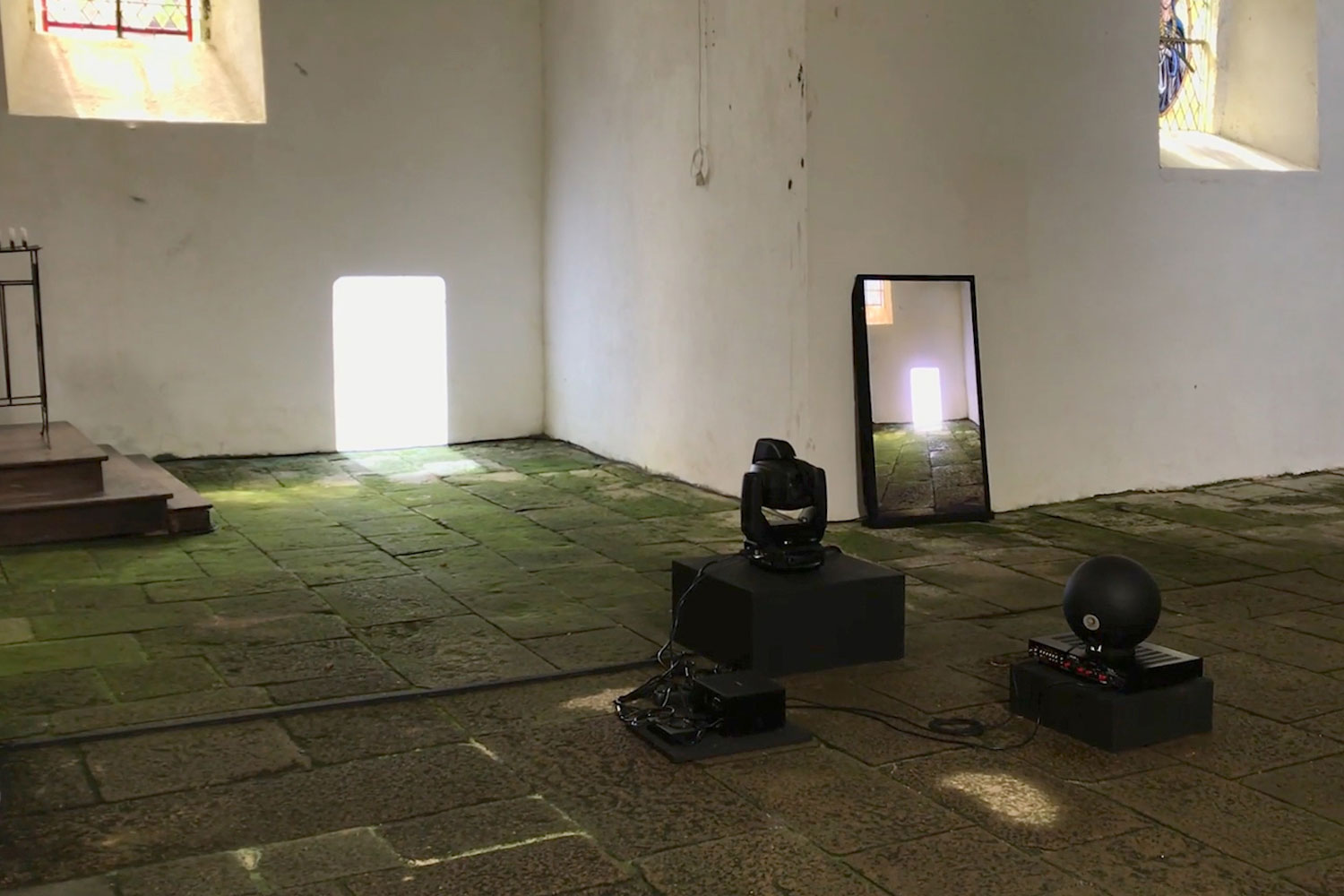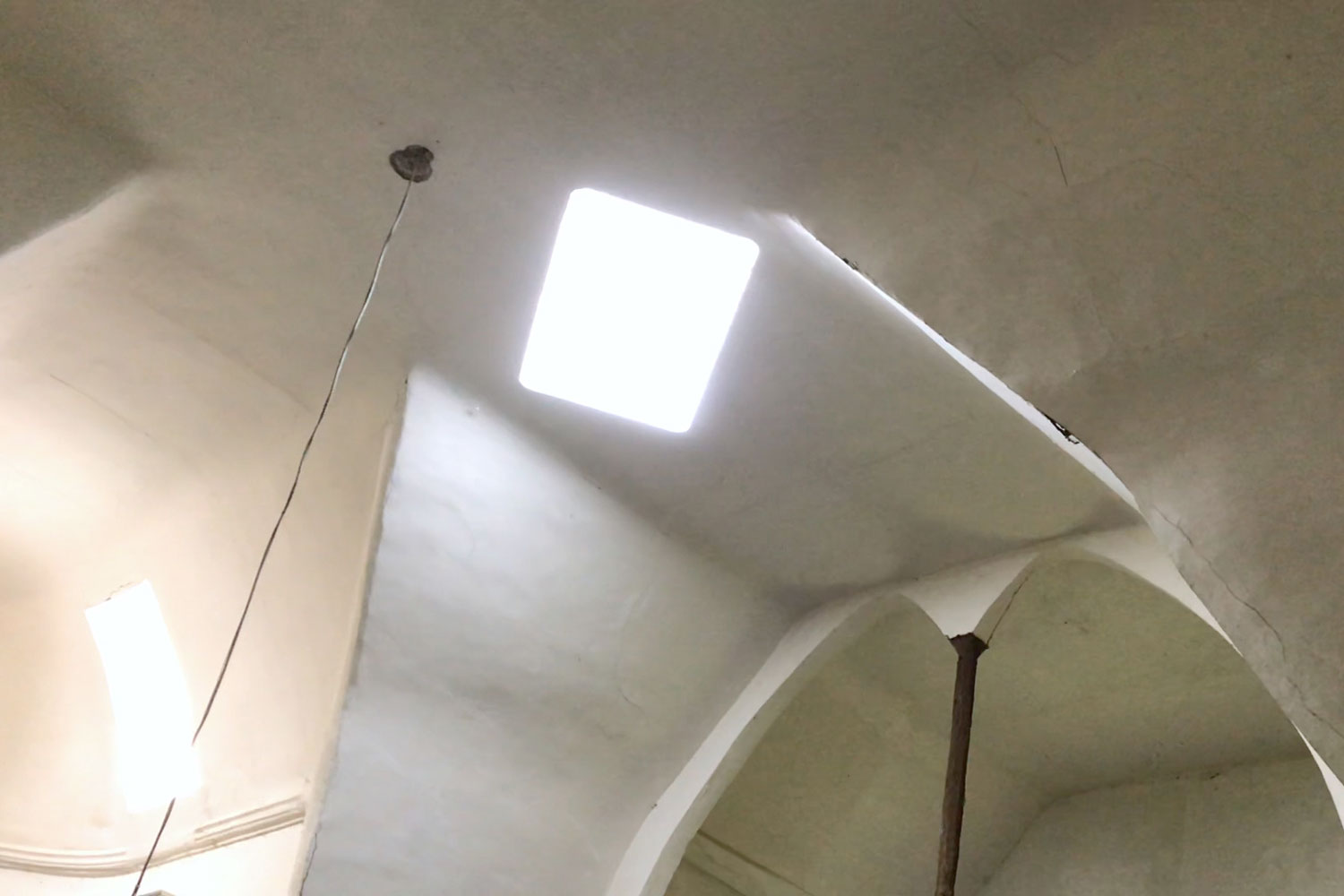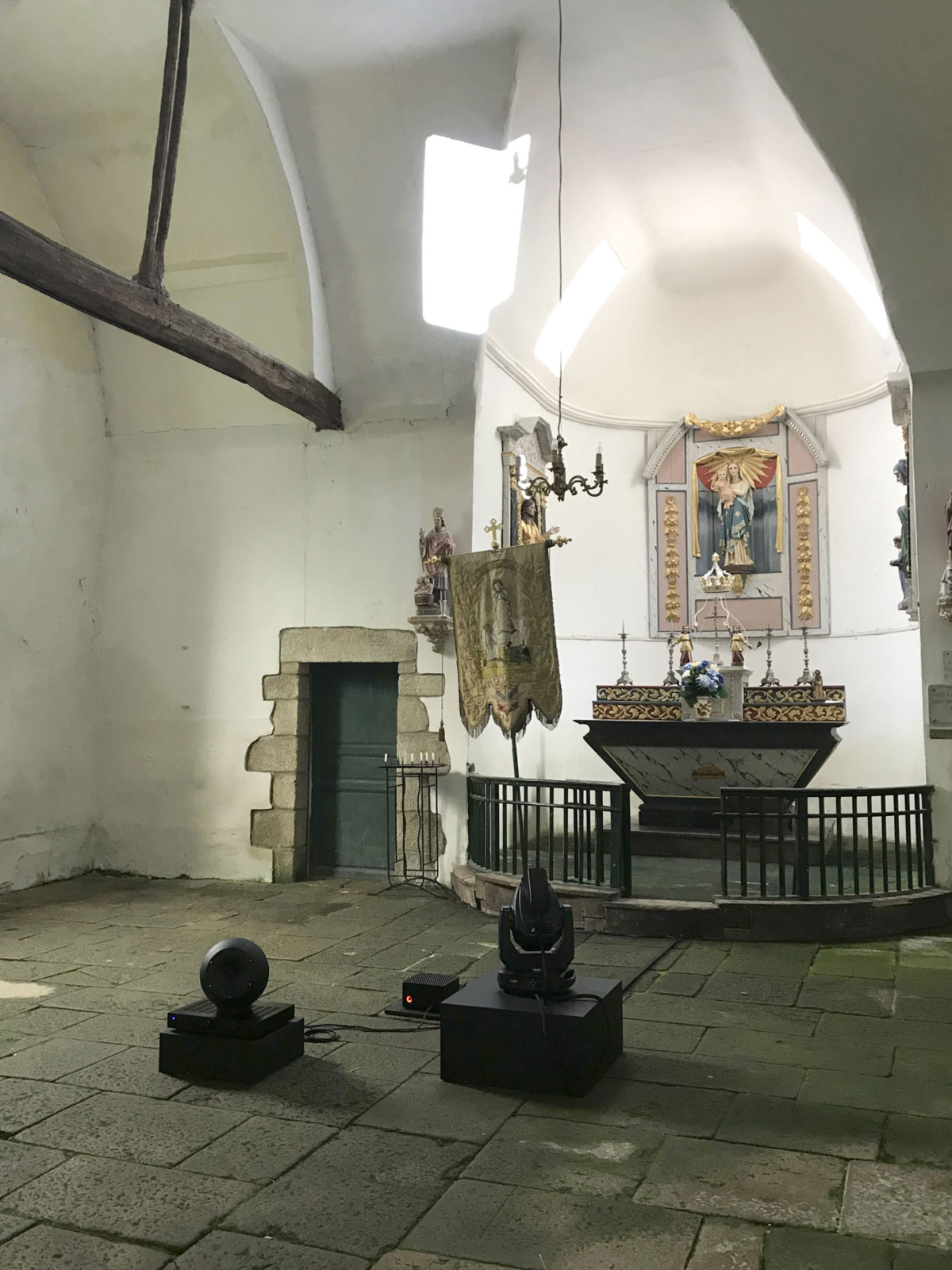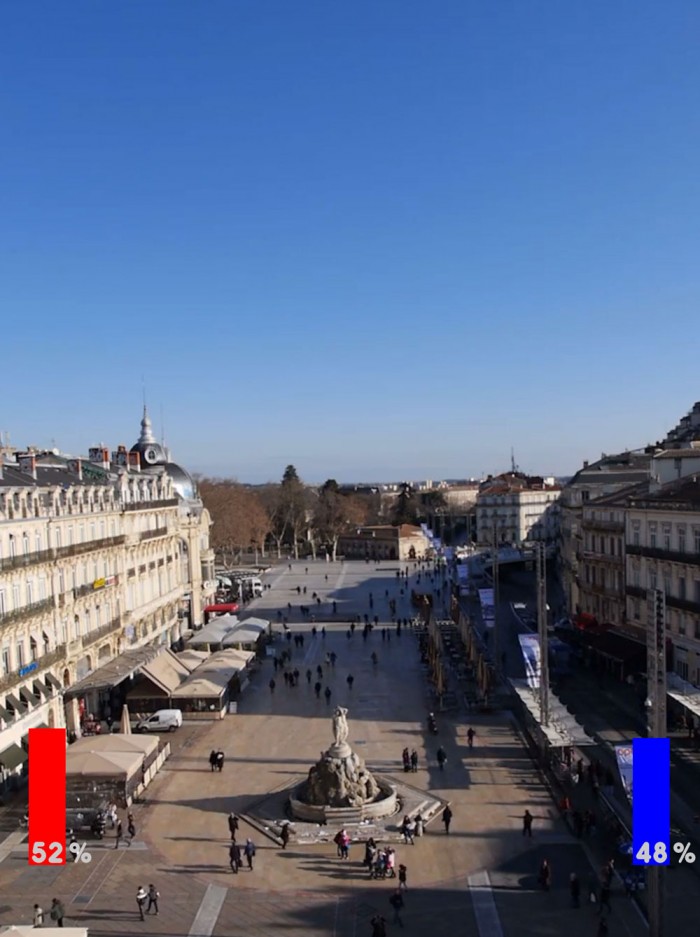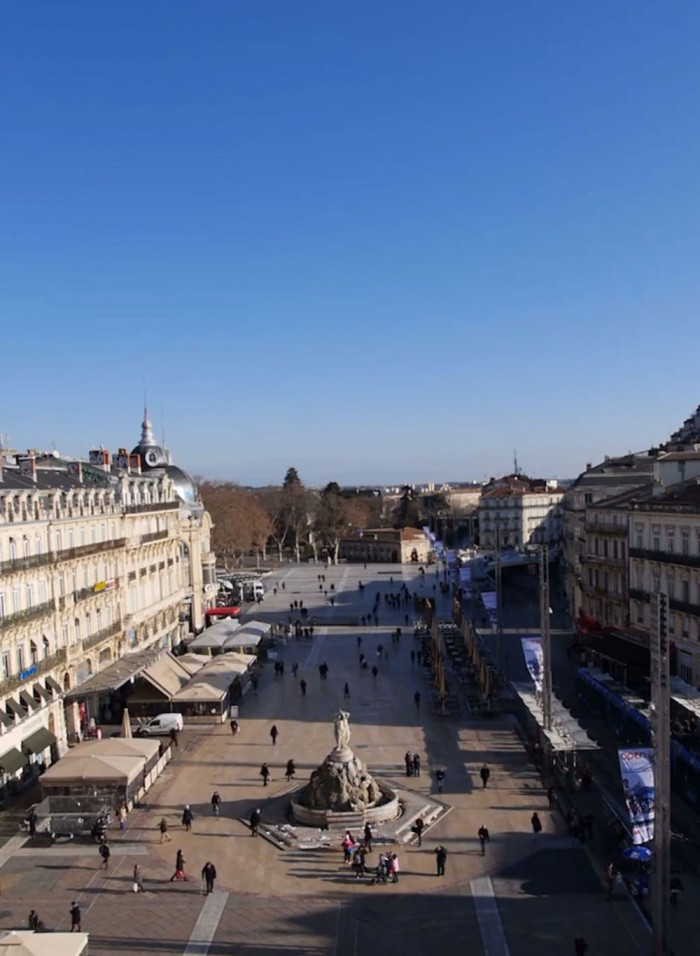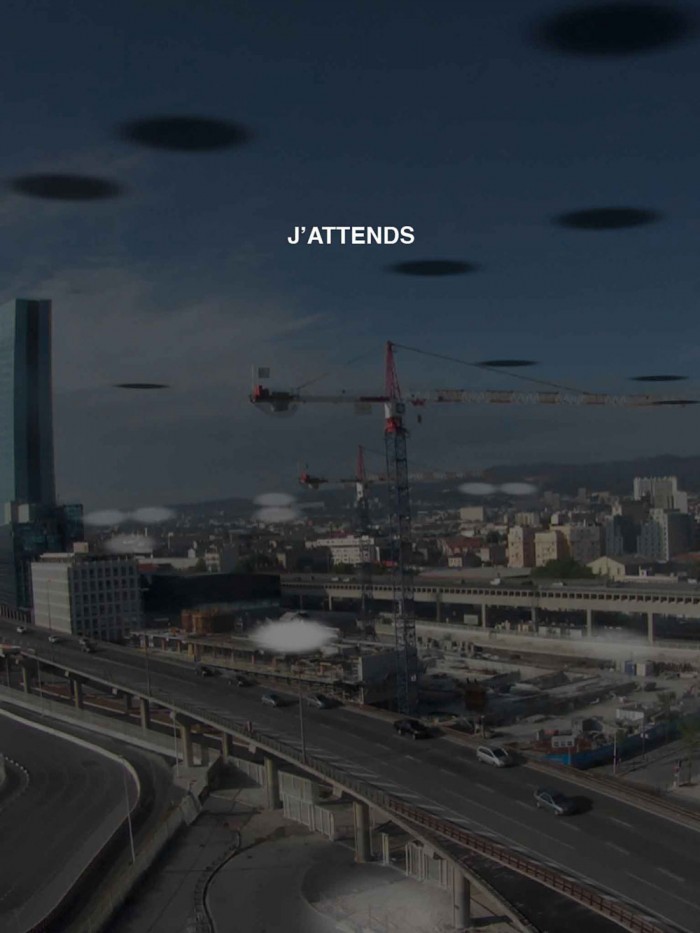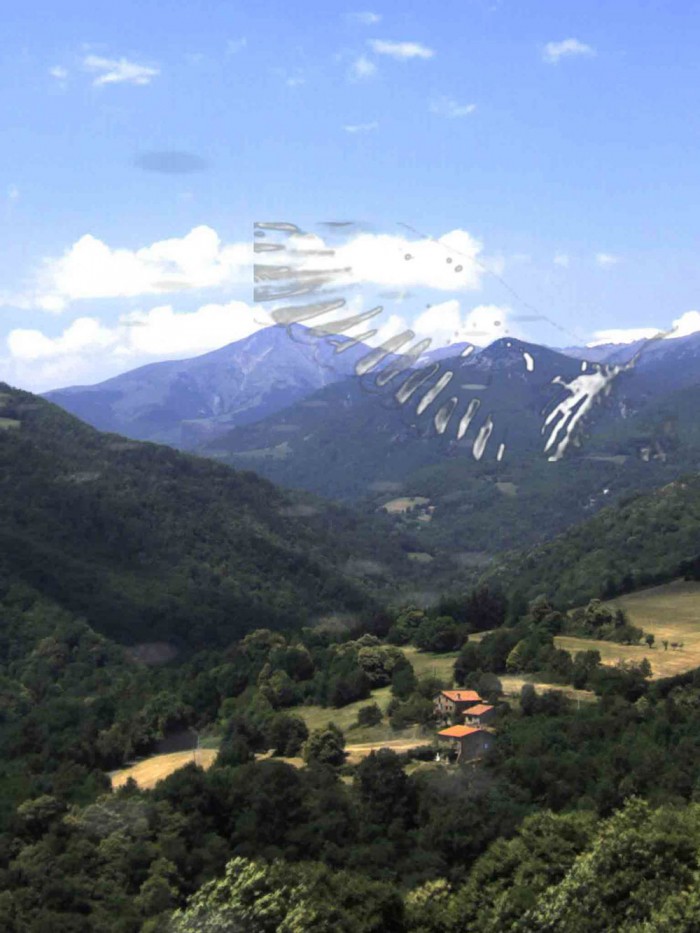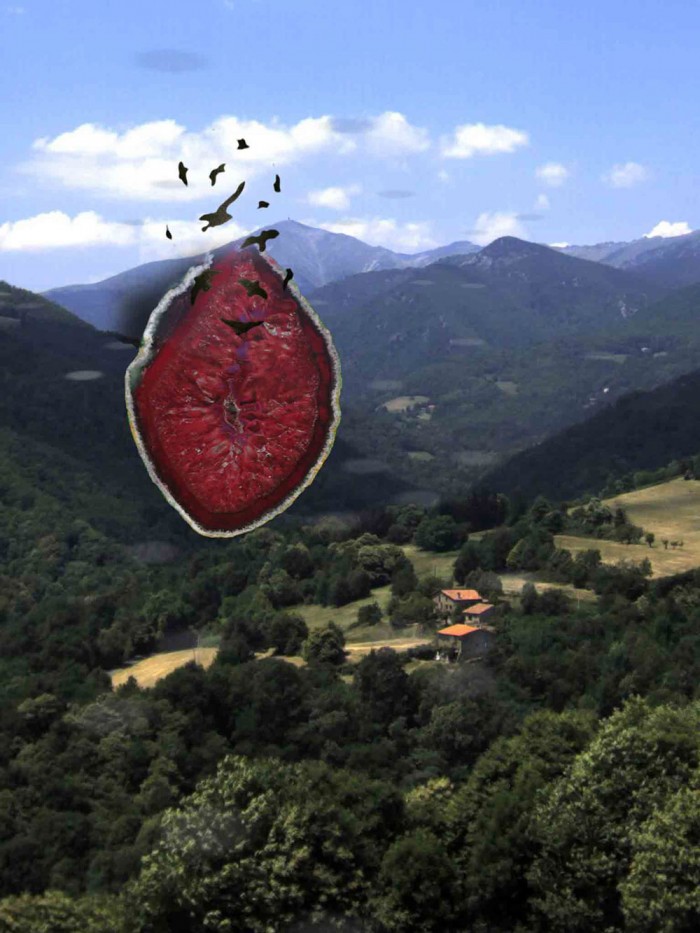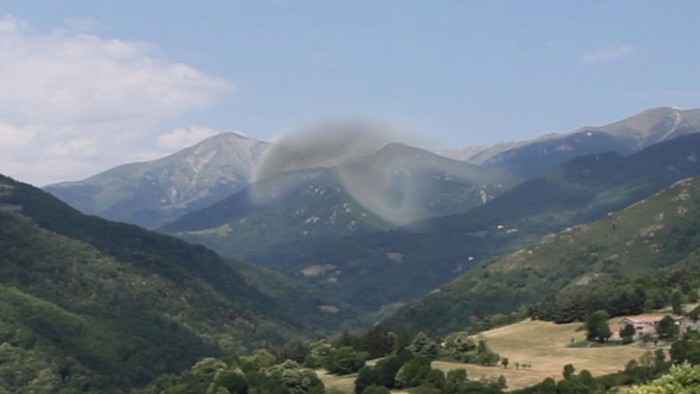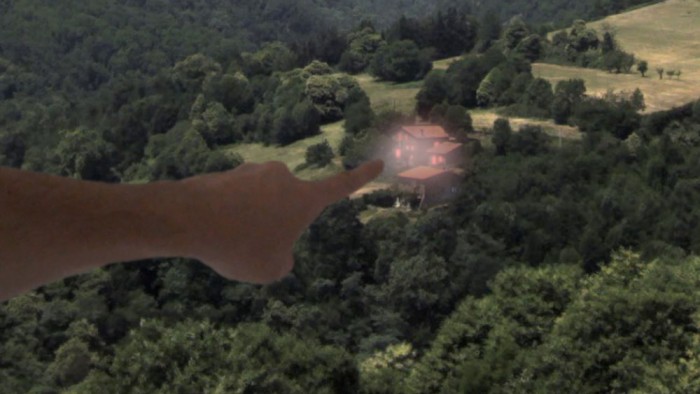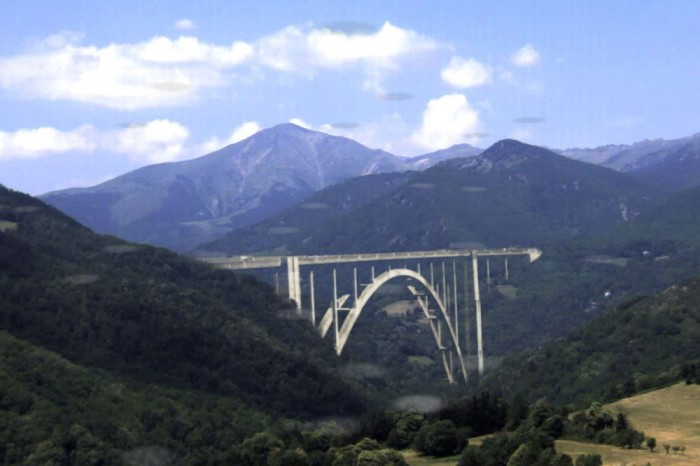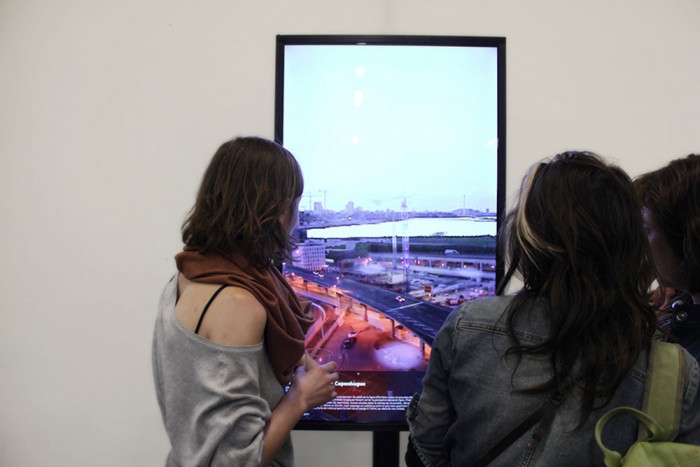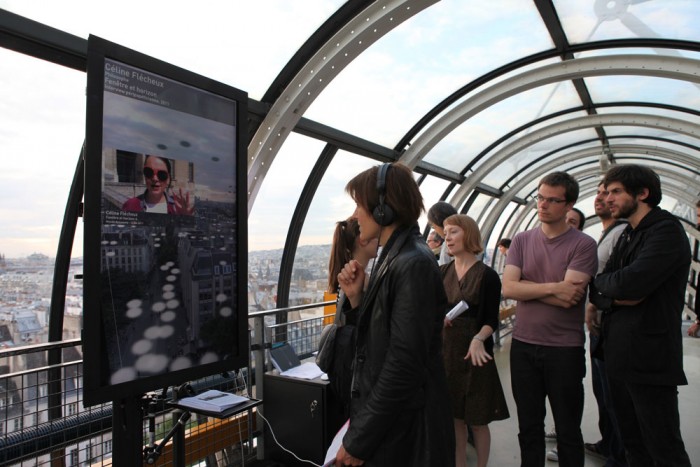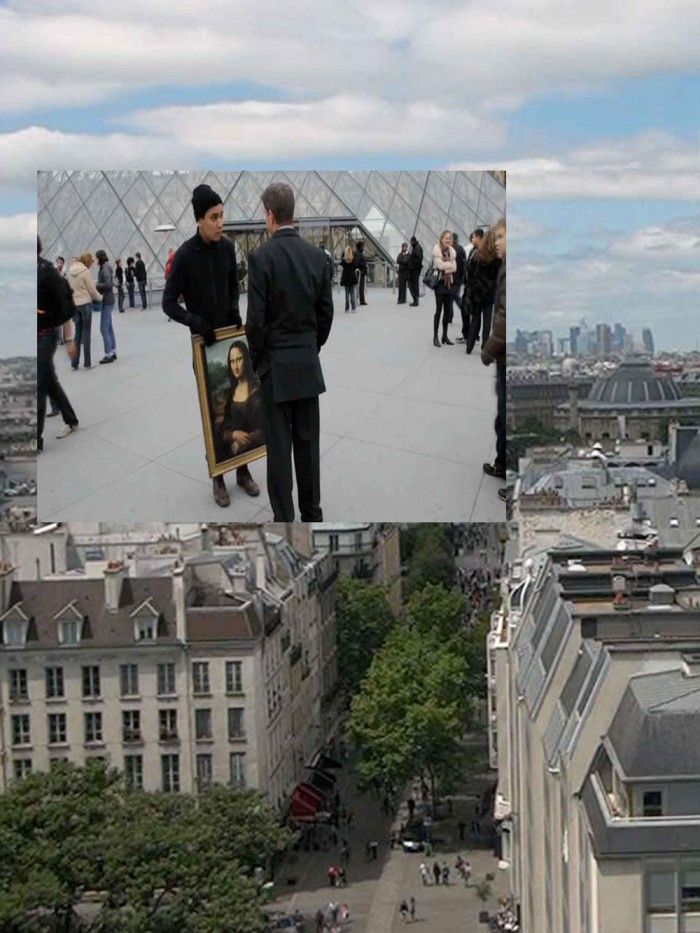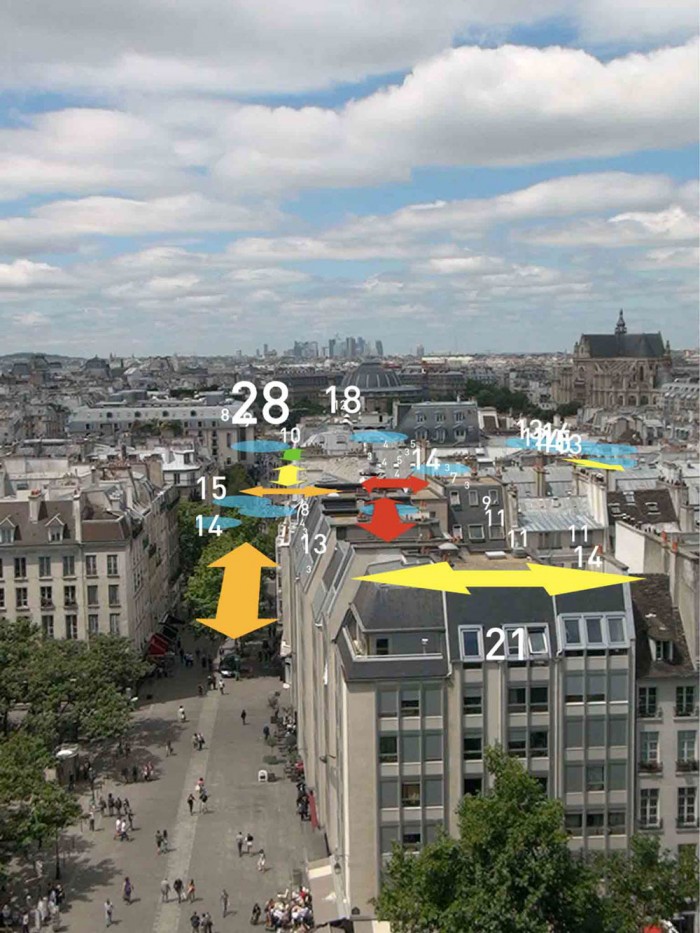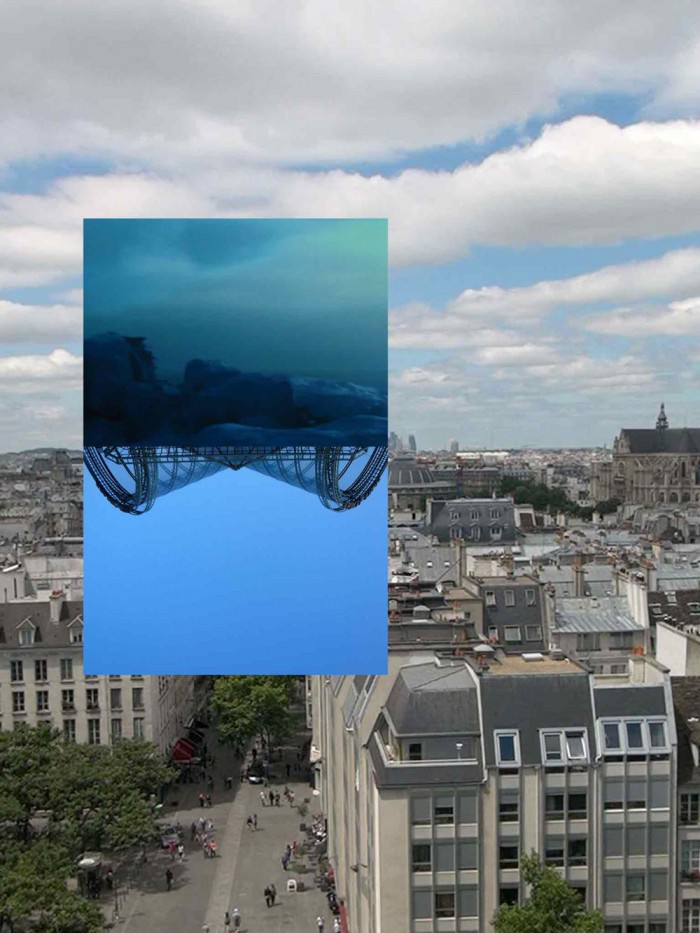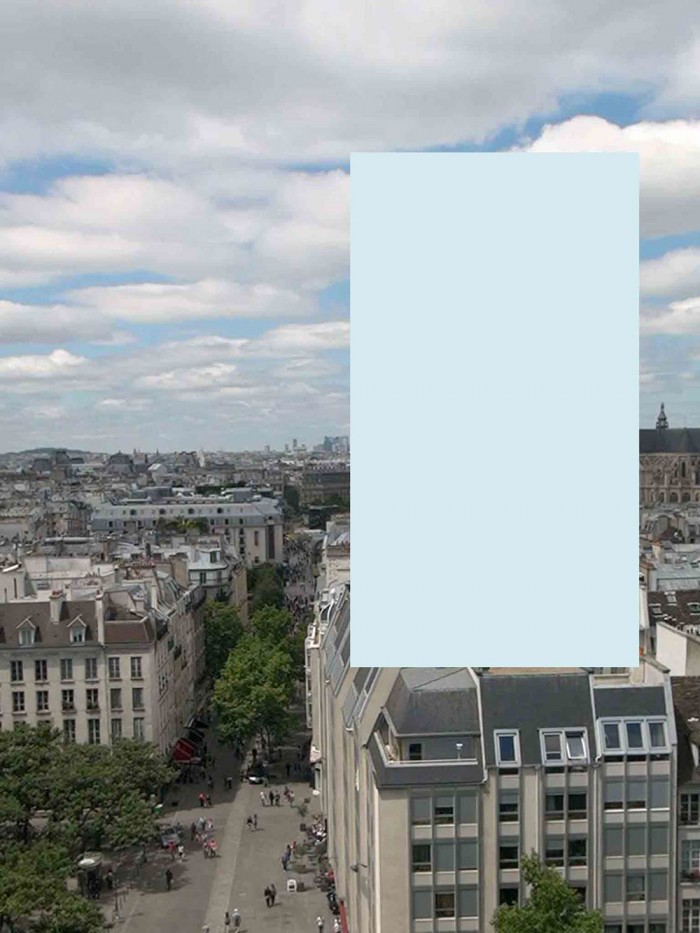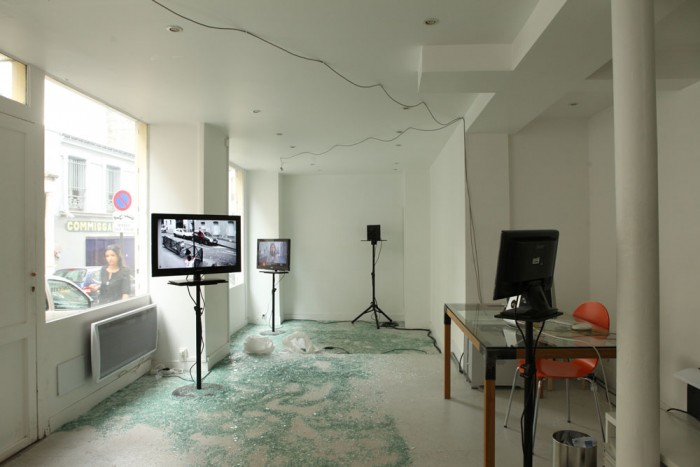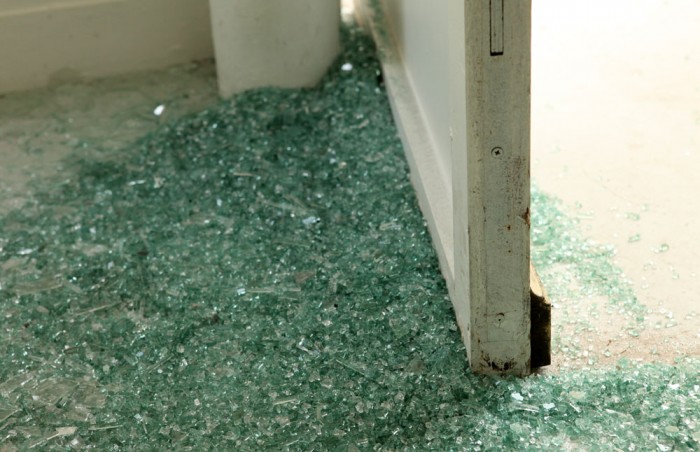Light projector, camera, screen, amplifier and speaker, computer, program, cables
L’Art dans les chapelles festival, Pontivy (FR), Notre-Dame-du-Moustoir, Malguénac, 18 July – 22 September 2020
Please note that the video shows the French version in a church, but the behavior and the text are aimed to be rewritten each time in situ.
Video capture (French version of the installation, with English subtitles) :
A projector turns on itself, slowly, exploring the space around it. It projects an intense rectangle of white light that it moves over all walls and objects. It also carries a camera, which films exactly what it illuminates. His image is shown on a large screen, placed nearby against a wall, like a painting: we see what he sees.
This apparatus speaks, in a synthesized voice, as if it was thinking aloud and trying to describe what surrounds it. It searches, stops at details, tries to understand space and objects, wonders about this place and its meaning but also about his own status and perception. Sometimes it seems to react to the presence of humans.
The Probe thus installs in a space the fiction of a non-human and living entity that inhabits it, like an artificial and panoptic force. The apparatus can also evoke the religious expectation that we have of technology, especially artificial intelligence, whose recurring motif is the surpassing of human capacities.
The language of the work calls up several registers, from surveillance devices to images of miraculous apparitions in classical painting, where the irruption of a ray of light often represents the emergence of the divine or a revelation. Here, the direction of the light is reversed: instead of coming from the outside, it emerges from the inside, as if the space had been turned upside down to become the theatre of an apparition and a questioning of the visible.
Coproduction by L’Art dans les chapelles
Engineering and programming Etienne Landon – thanks to Ben Kuperberg
